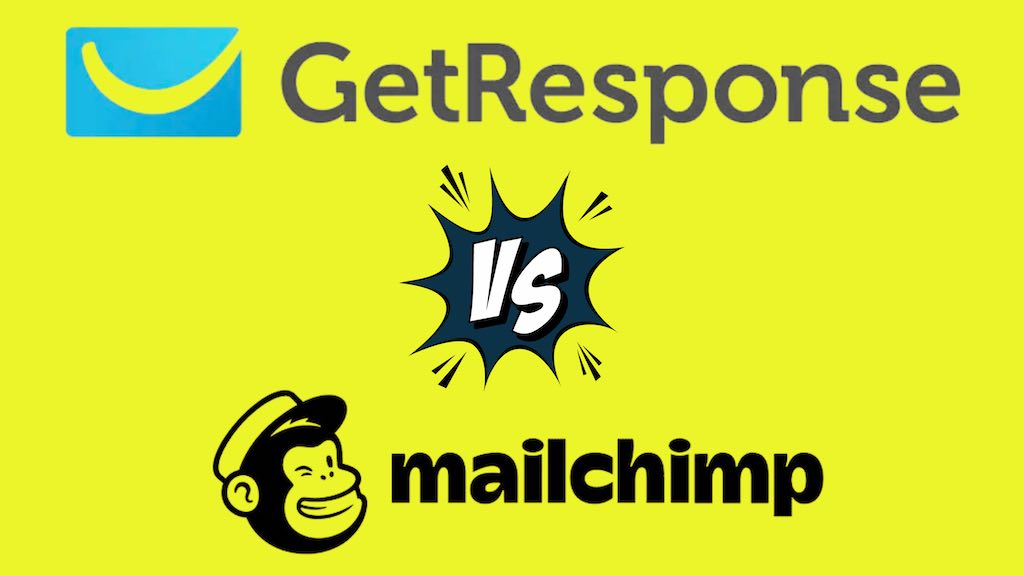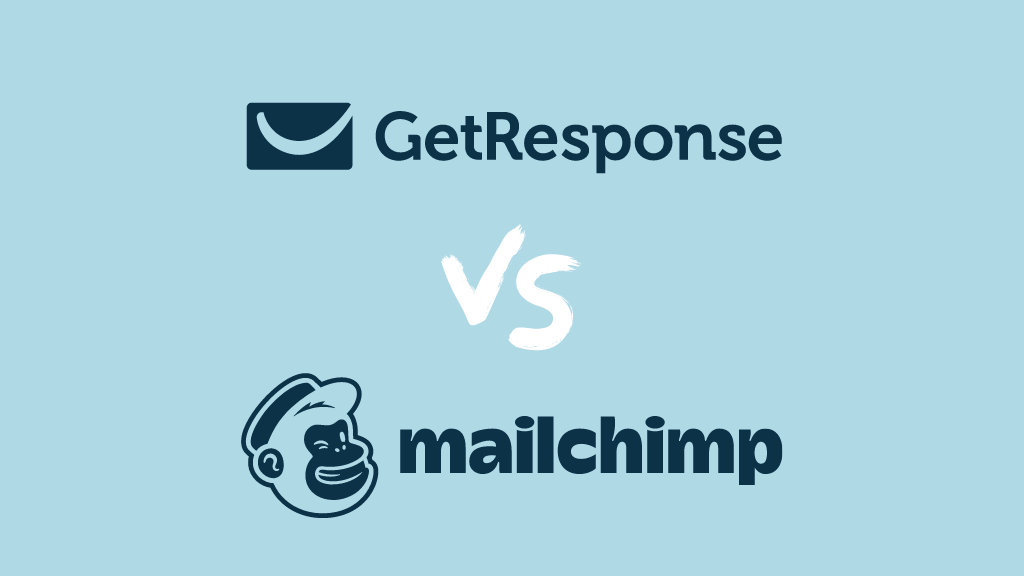Email marketing is crucial for any business’s growth. Getresponse and Mailchimp are two top tools for this.
Comparing these tools helps you choose the best fit for your needs. Understanding their features, pricing, and ease of use can save time and money. Many businesses struggle to decide which tool offers better value. This comparison breaks down the key aspects of Getresponse and Mailchimp.
With this information, you can make an informed decision. Let’s dive into the details and see how these platforms stack up against each other.

Credit: www.stylefactoryproductions.com
Overview Of Getresponse
GetResponse is a popular email marketing tool known for its robust features and user-friendly interface. It helps businesses create, send, and track email campaigns. Many companies use GetResponse to improve their email marketing strategies.
Visit Getresponse for Free Trial
Key Features
GetResponse offers a range of features that make email marketing easier. Here are some key highlights:
- Drag-and-Drop Email Editor: Create beautiful emails without coding.
- Autoresponders: Send automated emails to engage your audience.
- Landing Pages: Build custom landing pages to capture leads.
- Webinars: Host and manage webinars directly from the platform.
- Advanced Analytics: Track campaign performance with detailed reports.
- List Management: Organize and segment your email lists effectively.
- Integration: Connect with popular tools like WordPress and Shopify.
Click Here To Get Promo Code & Full Getresponse Review With Extra Bonuses
Pricing Plans
GetResponse offers flexible pricing plans to suit different business needs. Below is an overview of the available plans:
| Plan | Monthly Cost | Features |
|---|---|---|
| Basic | $15/month |
|
| Plus | $49/month |
|
| Professional | $99/month |
|
| Max | Custom pricing |
|
GetResponse also offers a free trial, allowing users to test the features before committing to a plan.

Credit: www.emailtooltester.com
Overview Of Mailchimp
Mailchimp offers a comprehensive email marketing tool with various automation features. It’s often compared to Getresponse for its user-friendly interface and robust analytics. Both platforms help businesses manage email campaigns effectively.
Mailchimp stands as one of the most popular email marketing platforms. Known for its ease of use, it offers a wide range of features for businesses of all sizes. It helps users create and manage email campaigns efficiently.
Key Features
Mailchimp offers an intuitive drag-and-drop email builder. This makes designing emails simple, even for beginners. The platform also provides customizable templates to suit different needs. Users can personalize emails to enhance engagement.
Automation is another strong point of Mailchimp. It allows users to set up automated email sequences. This saves time and ensures timely communication with customers. The platform also supports advanced segmentation. This feature helps target specific groups within the audience.
Mailchimp integrates with various third-party tools. This includes e-commerce platforms and social media channels. These integrations expand its functionality and make it versatile.
Click Here To Get Promo Code & Full Mailchimp Software Review With Extra Bonuses
Pricing Plans
Mailchimp offers multiple pricing plans. The Free plan is suitable for beginners. It includes basic email marketing features. Users can send up to 10,000 emails per month to 2,000 subscribers.
The Essentials plan starts at $9.99 per month. It includes more advanced features like A/B testing and custom branding. Users can send up to 50,000 emails per month.
The Standard plan costs $14.99 per month. It offers advanced insights and optimization tools. Users can send up to 100,000 emails per month.
The Premium plan starts at $299 per month. This plan is designed for large enterprises. It includes all features and supports unlimited contacts.
“`
User Interface And Ease Of Use
Choosing the right email marketing tool is essential. The user interface and ease of use greatly impact your experience. Here, we compare the interfaces of GetResponse and Mailchimp. Let’s see how they measure up.
Getresponse Interface
The GetResponse interface is clean and intuitive. It features a dashboard that showcases all your essential tools. You can easily access email campaigns, automation, and analytics from the main screen.
Navigation is straightforward. You have clear menus and sub-menus. A beginner can quickly learn the ropes. The drag-and-drop editor makes creating emails simple. No coding skills needed.
Here is a snapshot of the GetResponse interface:
| Feature | Description |
|---|---|
| Dashboard | Displays all essential tools and recent activity. |
| Navigation | Clear menus for easy access to features. |
| Drag-and-Drop Editor | Simple email creation without coding. |
Mailchimp Interface
The Mailchimp interface is modern and user-friendly. It provides a welcoming experience with a simple layout. The dashboard gives you quick access to campaigns, lists, and reports.
Mailchimp’s editor is also drag-and-drop. You can easily add text, images, and buttons. The interface is designed for ease of use, even for beginners.
Here is a snapshot of the Mailchimp interface:
| Feature | Description |
|---|---|
| Dashboard | Quick access to campaigns, lists, and reports. |
| Navigation | Modern layout with intuitive menus. |
| Drag-and-Drop Editor | Easy email creation with simple tools. |
Both GetResponse and Mailchimp offer user-friendly interfaces. They are suitable for both beginners and experienced users. Your choice will depend on your specific needs and preferences.
Email Design And Templates
Getresponse and Mailchimp offer diverse email design and templates. Both platforms provide easy-to-use tools for creating professional emails. Choose the one that fits your marketing needs best.
In the battle of email marketing tools, GetResponse and Mailchimp stand out. A key aspect of these platforms is their email design and templates. A good design can make your emails more appealing. It can also increase engagement with your audience.
Getresponse Templates
GetResponse offers a wide range of templates. You can choose from over 500 designs. The templates are customizable and mobile-friendly. You can edit them with a drag-and-drop editor. This makes it easy to create professional emails. You don’t need any coding skills.
The templates cover various categories. These include e-commerce, newsletters, and promotions. You can find a template that suits your business needs. Each template is designed to catch the reader’s eye. This can help improve your open and click rates.
Mailchimp Templates
Mailchimp also provides a variety of templates. You can select from over 100 designs. These templates are responsive and easy to customize. The drag-and-drop editor simplifies the process. You can quickly create beautiful emails.
Mailchimp’s templates cater to different industries. These include retail, entertainment, and education. You can find a template that matches your brand. The designs are clean and modern. This ensures your emails look professional. This can help build trust with your audience.
Automation Capabilities
Automation capabilities are crucial in email marketing. They help streamline tasks and save time. Both GetResponse and Mailchimp offer advanced automation features. But they have key differences. Let’s explore the automation capabilities of each.
Getresponse Automation
GetResponse shines with its powerful automation. The drag-and-drop builder is user-friendly. Create complex workflows with ease. Set triggers based on user actions. For example, send a welcome email when someone subscribes. Or, send follow-up emails based on user behavior.
The platform offers ready-made templates. Use them to create automated campaigns quickly. Segment your audience for targeted messaging. Personalize emails based on user data. This improves engagement rates. GetResponse also integrates with various CRM tools. This enhances its automation capabilities.
Mailchimp Automation
Mailchimp offers robust automation features too. The interface is intuitive. Set up automated workflows in minutes. Use pre-built templates for common tasks. For instance, welcome new subscribers with ease. Or, send birthday emails automatically.
Mailchimp excels in audience segmentation. Use tags and groups to organize contacts. Send personalized emails based on user behavior. This boosts open and click rates. Mailchimp’s automation integrates well with other tools. This makes it versatile and effective.

Credit: www.stylefactoryproductions.com
Integration Options
Choosing between GetResponse and Mailchimp can be challenging, especially when considering integration options. Integrations are crucial for streamlining workflows and enhancing productivity. Let’s compare the integration capabilities of both platforms.
Getresponse Integrations
GetResponse provides a wide range of integrations. These integrations help connect your marketing tools effortlessly.
- eCommerce: Integrate with Shopify, Magento, WooCommerce, and PrestaShop.
- Webinars: Connect with Zoom and Microsoft Teams.
- CRM: Use Salesforce and HubSpot for customer relationship management.
- Social Media: Link with Facebook, Twitter, and LinkedIn.
- Analytics: Integrate with Google Analytics and Kissmetrics.
GetResponse also offers API access for custom integrations. This ensures your business tools work together seamlessly.
Mailchimp Integrations
Mailchimp also supports a variety of integrations. These integrations help you automate and optimize your marketing efforts.
- eCommerce: Connect with Shopify, BigCommerce, and WooCommerce.
- Webinars: Integrate with GoToWebinar and Zoom.
- CRM: Use Salesforce, Zoho, and HubSpot.
- Social Media: Link with Facebook, Instagram, and Twitter.
- Analytics: Integrate with Google Analytics and Mixpanel.
Mailchimp also offers API access for custom integrations. This allows for a tailored approach to your marketing strategy.
Both GetResponse and Mailchimp offer robust integration options. These options ensure you can connect your favorite tools easily.
Customer Support
When selecting an email marketing tool, customer support is a crucial factor. Both GetResponse and Mailchimp offer various support options. This section will compare their customer service features.
Getresponse Support
GetResponse provides multiple support options. Customers can access 24/7 live chat and email support. This is beneficial for users in different time zones. The platform also offers phone support for Enterprise customers.
GetResponse has a comprehensive Help Center. It includes tutorials, FAQs, and detailed guides. Users can also find video tutorials for visual learning.
Another great feature is the webinars. GetResponse regularly hosts webinars to help users. These webinars cover various topics and best practices.
Mailchimp Support
Mailchimp offers different support levels based on the plan. Free plan users have access to email support for the first 30 days. After that, they can use the self-service Knowledge Base.
Paid plan users get additional support. They can access 24/7 email and live chat support. Higher-tier plans include phone support. This can be useful for more complex issues.
The Knowledge Base is extensive. It includes tutorials, articles, and guides. Mailchimp also provides marketing resources. These help users improve their email campaigns.
Mailchimp has a community forum. Users can ask questions and share experiences. This peer-to-peer support can be valuable.
Pros And Cons
Choosing between GetResponse and Mailchimp can be tricky. Both platforms offer a variety of features that cater to different needs. By comparing the pros and cons, you can make an informed decision based on what suits your business best.
Getresponse Pros And Cons
| Pros | Cons |
|---|---|
|
|
Mailchimp Pros And Cons
| Pros | Cons |
|---|---|
|
|
Frequently Asked Questions
What Are The Key Features Of Getresponse?
Getresponse offers email marketing, landing pages, webinars, and automation. It provides detailed analytics and integrations with various platforms.
How Does Mailchimp Pricing Compare To Getresponse?
Mailchimp has a free plan but becomes costly with more features. Getresponse offers more features at a competitive price.
Which Platform Has Better Email Templates?
Getresponse offers a wide range of customizable templates. Mailchimp also provides templates, but fewer customization options.
Is Getresponse Easier To Use Than Mailchimp?
Getresponse has a user-friendly interface with easy navigation. Mailchimp is also user-friendly but may require a learning curve.
Conclusion
Choosing between Getresponse and Mailchimp depends on your needs. Both tools offer strong email marketing capabilities. Getresponse is ideal for automation and webinars. Mailchimp, on the other hand, excels at ease of use and integrations. Evaluate your priorities and budget.
Consider your business size and goals. Test both platforms if possible. This way, you can see which suits you best. Ultimately, either choice can help improve your email marketing efforts effectively.

